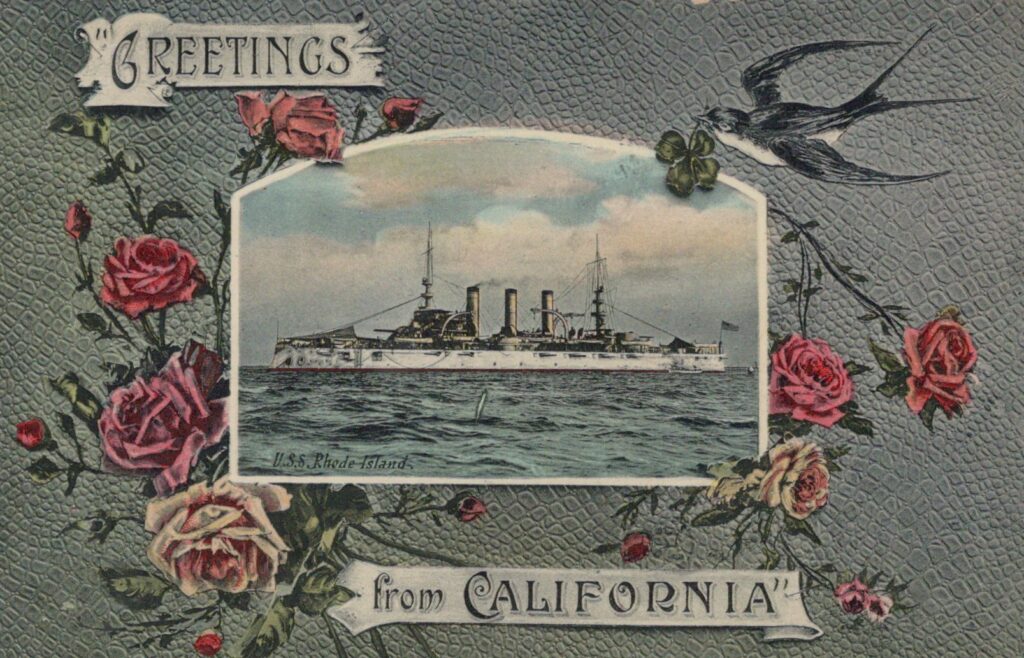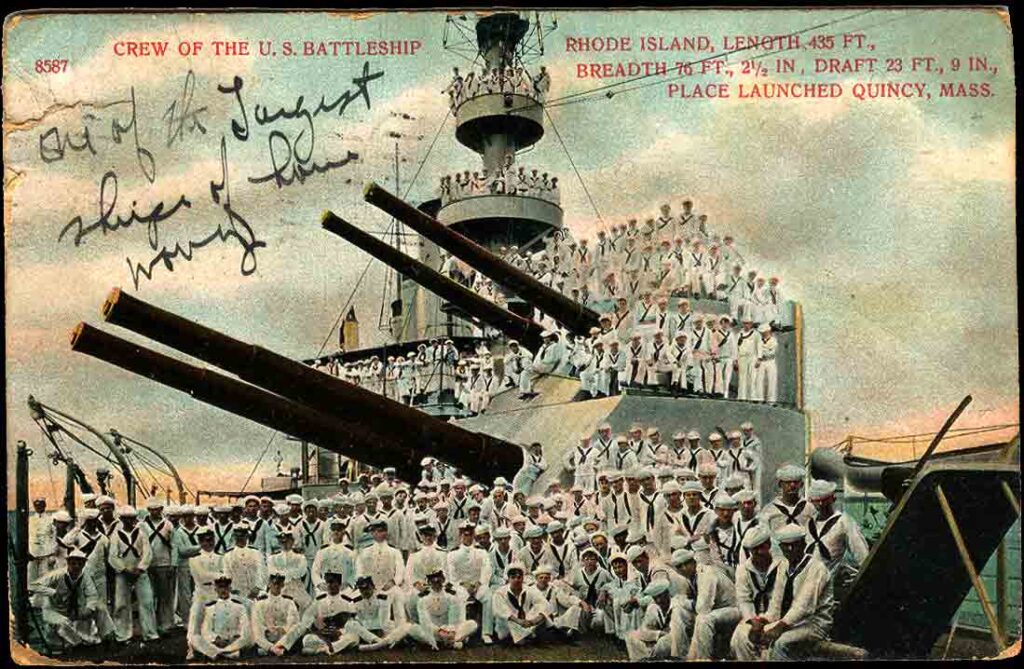Apologies, but no results were found for the requested archive. Perhaps searching will help find a related post.
The USS Rhode Island (BB-17) was a Virginia-Class battleship, the others being Virginia, Nebraska, New Jersey, and Georgia. She was built by Fore River Shipyard in Massachusetts with her keel laid down in May 1902. She was launched in May 1904, and commissioned in February1906 with Captain Joseph Murdock in command. After here shakedown cruise she joined 2nd Division, 1st Squadron of the Atlantic Fleet and in January 1907 was in Guantanamo Bay conducting gunnery training with the rest of the squadron. She then steamed to Cape Code Bay joining the Fleet Review, on Georgia Day, at the Jamestown Celebration.
The postcard at right was issued as part of a series by Allen Fanjoy showing the USS Rhode Island surrounded by roses. These cards were popular when the ships arrived in San Francisco. To see more of this portion of the collection follow this link: Allen Fanjoy Cards
During the trip around the world, Captain McCrea was in command to San Francisco where Captain Qualtrough took command remaining in First Squadron, Second Division. On July 20, 1908 Captain Henry McCrea died in Brooklyn, he was 57 years old. Georgia was one of the few ships that visited Tangier, Morocco and Marseilles, France. Captain Hutchins remained in command of Kearsarge throughout the cruise.
Upon return to the States she began a peacetime routine of maneuvers and training including an overhaul at the New York Navy Yard in 1909. Afterwards she was assigned to 1st Squadron, 3rd Division and was set on a training cruise to the Caribbean. She next went to western Europe visiting France and Britain and arrived back on the east coast to conduct training in Guantanamo Bay in March 1911. On June 28, 1913 Rhode Island became flagship and lasted until January 1914 as the Mexican Revolution began. Rhode Island cruised off Veracruz, Tampico, and Tuxpan to protect American Interests. Afterwards she returned to her training duties on the Atlantic Coast until the outbreak of WWI when she was transferred to 2nd Division, Battleship Force conducting torpedo training.
With the signing of the Armistice she was assigned to bring the troops home and made five trips between December 1918 and June 1919 carrying almost 5,000 soldiers. She was transferred to the Pacific Fleet at the end of the War becoming the flagship of the 2nd Division, 1st Squadron. She was decommissioned in 1920 and scrapped in 1923 under the Washington Naval Treaty. Her bell is preserved on display at the Rhode Island State House.






